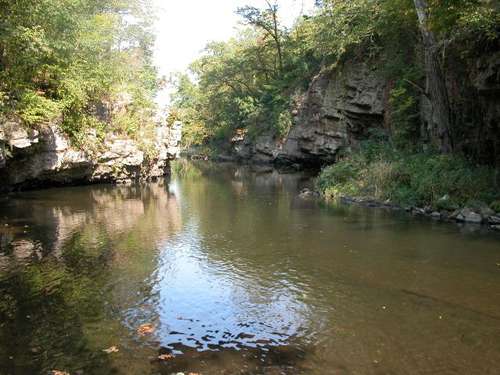EPA releases Clean Water Act rule

The EPAs Waters of the U.S. rule will help protect rivers, streams, and wetlands across the United States.
Photo: Trevor Russell/FMR
The United States Environmental Protection Agency (EPA) recently announced a new federal rule that ends a decade of legal limbo by clarifying which waters are and are not protected by the Clean Water Act.
Background: The landmark 1972 Clean Water Act revolutionized clean water governance throughout the U.S. and held most polluters (except field agriculture) accountable for newly established clean water standards.
Unfortunately, U.S. Supreme Court decisions in 2001 and 2006 jeopardized this authority by eroding Clean Water Act protections on seasonal and intermittent streams, and those with intermittent or seasonal connections to other aquatic resources.
These decisions jeopardized about 90 percent of Minnesotas remaining wetlands, and about 50 percent of streams in Ohio, Michigan, Illinois, Wisconsin, and Minnesota. The Courts rulings also threw a wrench into state and local decision-making by forcing local managers to make subjective case-by-case decisions on how to apply the law.
The ruling: The EPAs rule will clarify Clean Water Act protections and enhance Minnesotas water quality by protecting wetlands and streams that feed our rivers and lakes. Healthy wetlands and streams provide habitat for wildlife, clean water for recreation and aquatic life, and important sources of clean drinking water for thousands of Minnesotans.
The rule:
- Closes loopholes in the Clean Water Act that leaves 51% of Minnesota's streams, and millions of acres of wetlands, at risk from pollution and development.
- Clarifies longstanding Clean Water Act protections for many (but not all) wetlands and streams.
- Clarifies EPA, Army Corps of Engineers, and state responsibilities to protect waters of the United States from pollution and destruction.
- Preserves existing exemptions for farming, forestry, mining and other land use activities.
- Excludes upland ditches, ponds, and other upland water features important for farming and forestry.
- Cuts red tape and provides clarity and certainty to business and developers.
The rule does not:
- Add to or expand the scope of water historically protected under the Clean Water Act.
- End the exemption for large field agricultural operations the largest source of pollution to our waters.
For more information on the EPAs Waters of the United States rule, check out this video from EPA Administrator Lisa McCarthy (and her terrific Boston accent).
Additional information on the EPAs Waters of the United States rule is available here. Full text of the proposed rule is available here.